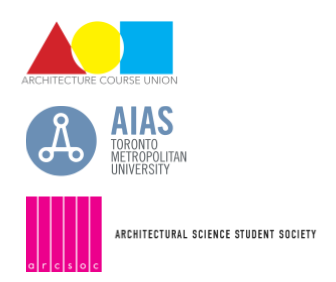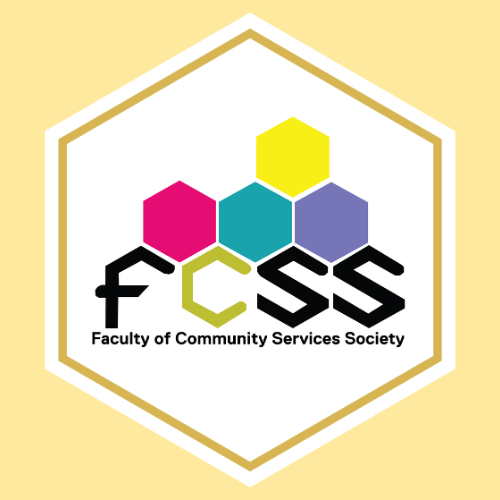About

TMU's Orientation Week takes place the week before classes begin and gives incoming students the chance to connect with other new students, get familiar with their academic program, and get to know their way around campus. Our Orientation Week is designed to meet the needs of all new students.
Every year we offer new events and programs, but every Orientation Week at TMU features:
- Academic program and faculty-specific orientations so incoming students can meet other peers in their program, find out about faculty-specific resources and get to know their professors.
- Information about how to access on-campus supports and resources so new students know how to find what they need after classes start.
- Tons of engaging performances, concerts, and giveaways!
Along with Central Orientation, each Faculty at TMU offers a Faculty-specific Orientation where students can opt-in to spend their Orientation Week with students from their own program. Students can choose to attend events from both Central Orientation and their Faculty-specific Orientation based on their own interests.
Here are the different Faculty Student Societies that are responsible for Faculty-specific Orientation. Please note, the Faculty-specific Orientation is voluntary and is separate from the Academic Orientation which is mandatory and is hosted by your program office.

Faculty of Community Services Society (FCSS) is the faculty-level student society government building a community for over 6,000+ undergraduate students in the Faculty of Community Services (FCS) at Toronto Metropolitan University. Our mission is to unite students within the eight full-time degree schools at the Faculty of Community Services, enabling them to be heard as one unified voice. We center our initiatives around unity, mental health, professional development, and academics. We support our membership from Orientation Week through to our Prom.
FCSS also supports the 30+ student service clubs, student interest clubs, committees, and course union clubs within our umbrella. We are the Home of Queen Belinda Bee, the official mascot of our hive community, and our office is located at the Daphne Cockwell Health Sciences Complex at DCC-331. Follow us on Instagram: @FCSSOnline (external link)
Representing 9 schools, 15 programs, and over 5,500 students, the Society of the Creative School (SCS) is a student-led society that represents all full-time undergraduate students within The Creative School at Toronto Metropolitan University in the heart of downtown Toronto. The SCS was started for students, by students, with the goal of uniting all programs in The Creative School. We provide collaborative programming and networking opportunities that allow students to forge new relationships, gain industry contacts and learn new skills that will last a lifetime.
We cannot wait to meet you. Follow us on social media (@societyofthecreativeschool).
The Metropolitan Undergraduate Engineering Society represents over 5500 full-time undergraduate Engineering students at Toronto Metropolitan University. Founded in 1988, MUES is a student-run organization that aims to provide quality co-curricular programming throughout the year. MUES hosts various events throughout the year – these include events designed to assist you in an academic capacity, athletic or social events, events to raise awareness for charitable causes, and events that focus on career preparedness. We support our membership from Orientation Week all the way through to the Iron Ring Ceremony and graduation.
MUES also provides support to the 50+ student organizations that exist at Metropolitan Engineering – these include design teams, chapter organizations, course unions and interest groups.
The TRSS annually hosts and supports various events and initiatives within the University community and around North America. Some of the more popular events planned for this year includes: TRSS Commerce Frosh Week, Ted Rogers Management Conference (TRMC), Week of Welcome, Frost Week and much more! The TRSS also provides the student body with handbooks, training sessions, and excellent networking opportunities in a wide variety of interests.
The Undergraduate Science Society of Toronto Metropolitan (USSTM) is a society made up of many individuals who represent students in the Faculty of Science. The USSTM ensures students feel supported, appreciated, and motivated in their programs through a variety of support opportunities and services, events such as the Science Formal, and representation through making sure student committees and student voices are heard.
The Society of Arts, Social Sciences, and Humanities (SASSH) is a student-led society that is responsible for serving the interests of 4900+ Arts students at Toronto Metropolitan University. The SASSH seeks to create services, resources and events that will enhance the academic, professional, and co-curricular experiences for all Arts students. As a whole, the SASSH works to encourage all members to become active participants within the University, while providing opportunities for personal development.

The Architecture Course Union (ACU) (external link) is the official course union and supports students with matters related to academia, networking and school culture.
The American Institute of Architecture Students (AIAS) (external link) at TMU organizes events and programs to encourage students to discover and ignite their true passions, and to advance the study of architecture. AIAS Toronto Met Chapter connects with the North American network of architecture student groups.
The Toronto Met Architectural Science Society (arc.soc) (external link) provides students with opportunities to participate in not only the design of projects but to see their designs come to life. This society helps to support students both financially and academically by furthering their education with design-build projects, competitions, and events beyond the limits of the University.
ACU, AIAS, Arc.Soc, and the Department of Architectural Science collaborate to plan and execute the annual undergraduate student orientation.
TMU's Aboriginal Land Acknowledgement
Toronto is in the ‘Dish With One Spoon Territory’. The Dish With One Spoon is a treaty between the Anishinaabe, Mississaugas, and Haudenosaunee that bound them to share the territory and protect the land. Subsequent Indigenous nations and peoples, Europeans and all newcomers have been invited into this treaty in the spirit of peace, friendship and respect.
The “Dish”, or sometimes it is called the “Bowl”, represents what is now southern Ontario, from the Great Lakes to Quebec and from Lake Simcoe into the United States. We all eat out of the Dish, all of us that share this territory, with only one spoon. That means we have to share the responsibility of ensuring the dish is never empty, which includes taking care of the land and the creatures we share it with. Importantly, there are no knives at the table, representing that we must keep the peace. The dish is graphically represented by anwampum.
This was a treaty made between the Anishinaabe and Haudenosaunee after the French and Indian War. Newcomers were then incorporated into it over the years, notably in 1764 with The Royal Proclamation/The Treaty of Niagara.
The land acknowledgment started in British Columbia, where there are no treaties at all. Its popularity has spread as an acknowledgment of Indigenous presence and assertion of sovereignty. It is used in a variety of ways, such as at opening events and meetings.
Learn more about TMU's Land Acknowledgement from TMU's Indigenous Education Council.





